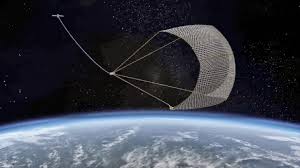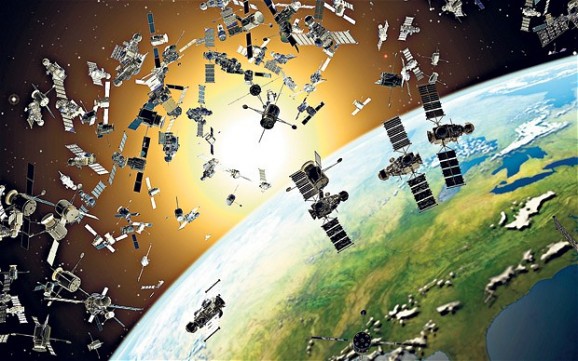Japanese Space Agency Will Pick Up Our Space Trash With A Big Magnetic Net
This article is more than 2 years old
 Humans don’t just litter on planet Earth — our waste has made it all the way to space. But especially after seeing Gravity, it’s difficult to imagine any astronauts wanting to mess with all the space junk out there. So JAXA, the Japan Aerospace Exploration Agency, has come up with a solution: a big ol’ magnetic net to round up all our space trash.
Humans don’t just litter on planet Earth — our waste has made it all the way to space. But especially after seeing Gravity, it’s difficult to imagine any astronauts wanting to mess with all the space junk out there. So JAXA, the Japan Aerospace Exploration Agency, has come up with a solution: a big ol’ magnetic net to round up all our space trash.
There’s far more space junk out there than we could imagine — hundreds of thousands of chunks from our various satellites and other spacecraft are, just as they do in Gravity, orbiting the planet at great speeds. A report released a couple weeks ago by the Congressional Research Service estimates that “roughly 22,000 objects larger than the size of a softball and hundreds of thousands of smaller fragments” litter Earth’s orbit, and that this debris “potentially threatens U.S. national security interests in space, both governmental (military, intelligence, and civil) and commercial.” Even a small object, about 10 centimeters wide,m could destroy a satellite. In 2007, China launched an anti-satellite test — a missile that blew apart one of their old weather satellites and generated a large percentage of the debris mentioned in the earlier figure. Just a couple of years later, a U.S. commercial satellite ran into an old Russian satellite, generating even more debris. There’s so much space trash out there that experts worry that it could cause serious collisions every 5-9 years. Astrophysicist Donald Kessler was worried about this back in the 1970s — the Kessler syndrome is an ongoing process of collisions generating ever more space debris.

So it’s time to go space fishing. JAXA consulted with fishing equipment company Nitto Seimo in devising its net. It’s 700 meters long, made of aluminum and steel wiring, and contains sensors that detect light reflecting from debris. An uncrewed spacecraft will carry the net, which can change orbit via electrical currents travelling through its wires. Once the net is full of trash, the spacecraft will slow down, and re-entry into the atmosphere will destroy it, the net, and all the debris.
It all sounds pretty awesome, but there are some challenges. It’s unclear how quickly the net will work — it’s possible the whole process could take up to a year. While it’s up there, there’s always the chance that the net snags or collides with currently operating satellites. It’s also possible that the debris caught in the net could be big or sharp, which could break through the wires.
JAXA’s test launch will occur next month, and if it proves successful, JAXA will follow up with an even longer version that can haul in defunct satellites. Who knows, maybe it’ll haul in an alien or two.












